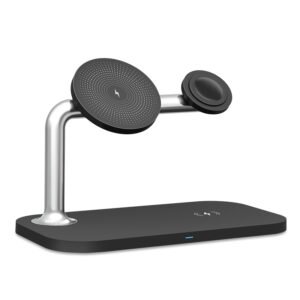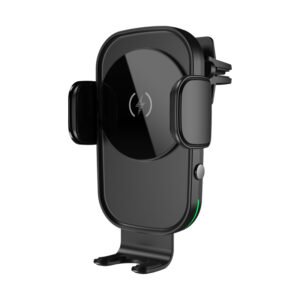Wireless charging has become increasingly popular in recent years, offering a convenient and hassle-free way to charge devices. While wireless charging has many benefits for everyone, it is particularly useful for individuals with disabilities, providing them with an accessible and convenient way to keep their devices charged.
In this article, we will discuss the benefits of wireless charging for individuals with disabilities, including accessibility, convenience, and safety.
Accessibility
One of the primary benefits of wireless charging for individuals with disabilities is accessibility. Traditional charging methods, such as plugging a cable into a device, can be difficult for individuals with mobility issues or dexterity impairments. Wireless charging eliminates the need for cables, making it a more accessible option.
Wireless charging pads are also more accessible than traditional charging outlets, as they can be placed on a flat surface, making them easier to reach and use. This is particularly useful for individuals who use a wheelchair or have limited mobility, as they can simply place their device on the charging pad without having to bend or stretch.
Convenience
Wireless charging also offers a high level of convenience for individuals with disabilities. As previously mentioned, traditional charging methods can be difficult and time-consuming. Wireless charging eliminates the need to find a cable and outlet, making it a more convenient option.
Wireless charging pads can be placed in various locations throughout a home or office, making it easier for individuals with disabilities to keep their devices charged. This means they don’t have to worry about carrying cables or finding an outlet when their device needs to be charged.
Safety
Wireless charging also provides an added level of safety for individuals with disabilities. Traditional charging methods can be hazardous, particularly for individuals with limited mobility. Cables can become tripping hazards, and the act of plugging and unplugging devices can be challenging and even dangerous.
Wireless charging eliminates these hazards, as there are no cables to trip over or pull on. This means individuals with disabilities can safely charge their devices without risking injury.
Conclusion
Wireless charging offers a range of benefits for everyone, but it is particularly useful for individuals with disabilities. Accessibility, convenience, and safety are just a few of the reasons why wireless charging is a great option for individuals with disabilities.
As technology continues to advance, we can expect to see even more innovations in wireless charging that will make it an even more accessible and convenient option for individuals with disabilities. By incorporating wireless charging into our daily lives, we can help to create a more inclusive and accessible world.













